Formatting the Bullets in a Bullet Chart
This topic describes how you can format the bullets in a bullet chart.
- Right-click any bullet in the bullet chart and select Format Bullet from the shortcut menu or double-click any bullet in the chart. Designer displays the Format Bullet dialog box.
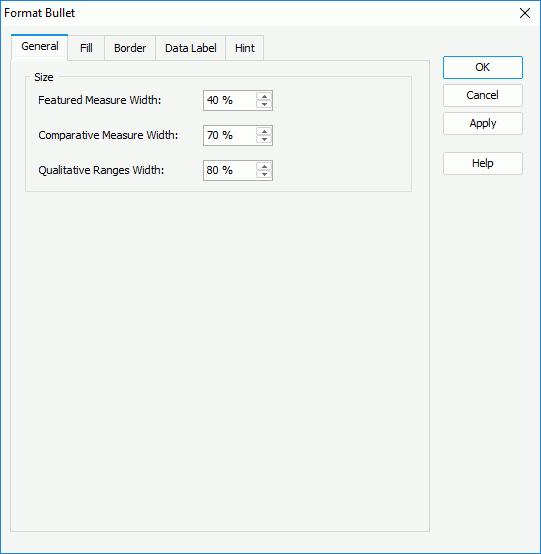
- In the General tab, specify the size of the bullets by setting the width of the featured measure, comparative measure, and qualitative ranges respectively.
- In the Fill tab, set the color pattern to fill the bullets.
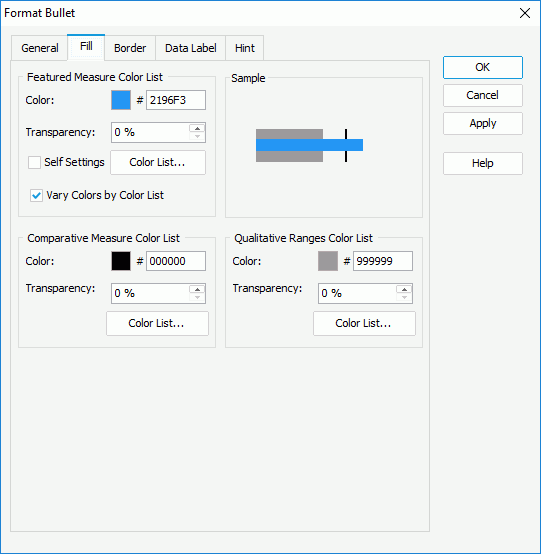
In the Featured Measure Color List box, first decide whether to define the color pattern on the featured measures themselves by using the Self Settings checkbox: when Self Settings is unselected (the default behavior), Designer synchronizes the color pattern that you specify here with the Pattern List property on the chart object in the Report Inspector, which data markers of other subtypes can also apply if the chart is a combo chart; when you select Self Settings, it indicates that the color pattern is private to the current data markers themselves (the bullets in this case), which Designer remembers and applies to the data markers of a new type automatically if later you change the type of the chart. Then, specify the color pattern as follows: set the color and the transparency of the color to fill all the featured measures (to change the color, select the color indicator and select a color from the color palette, or type the hexadecimal value of a color in the text box); if you want to apply different colors to the featured measures, select Vary Colors by Color List, then select Color List to specify the color pattern for each featured measure in the Color List dialog box.
In the Comparative Measure Color List/ Qualitative Ranges Color List box, specify the color and the transparency of the color to fill the selected comparative measures/qualitative ranges in the same data series, or select Color List to specify the color pattern for comparative measures/qualitative ranges in the same data series respectively.
- In the Border tab, specify the properties for the border of the bullets.
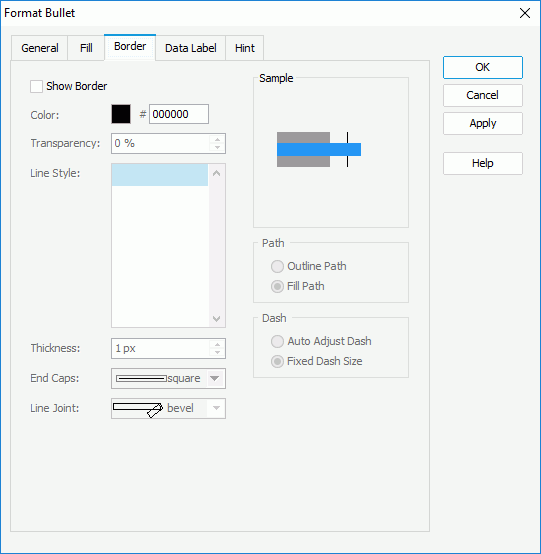
Select Show Border if you want to show the border of the bullets, then specify the color, color transparency, line style, thickness, end caps style, and line joint mode of the border.
In the Path box, specify the fill pattern of the border: Outline Path or Fill Path.
In the Dash box, select to automatically adjust the dash size or use fixed dash size if you select a dash line style for the border.
- Skip the Data Label tab because Designer does not support displaying data labels in bullet charts.
- In the Hint tab, specify the properties of the chart hint (the Show Tips property of the chart paper in the Report Inspector should be "true" if you want to show the hint): specify whether to include the category and series values in the hint, whether to scale big and small numbers, and whether to use customized names for the fields on the value axis in the hint, and customize the names as you want. A hint displays the value a bullet represents when you point to the bullet in Designer view mode, in HTML output, or at runtime.
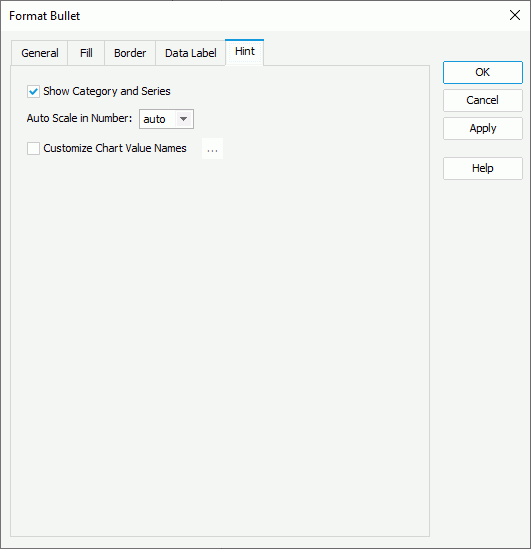
- For a bullet chart in a library component, you can define web behaviors on the bullets in the Behaviors tab.
A web behavior contains a trigger event and a web action to be triggered when the event occurs on the bullets at runtime. You can add as many web behaviors to the bullets as you need.
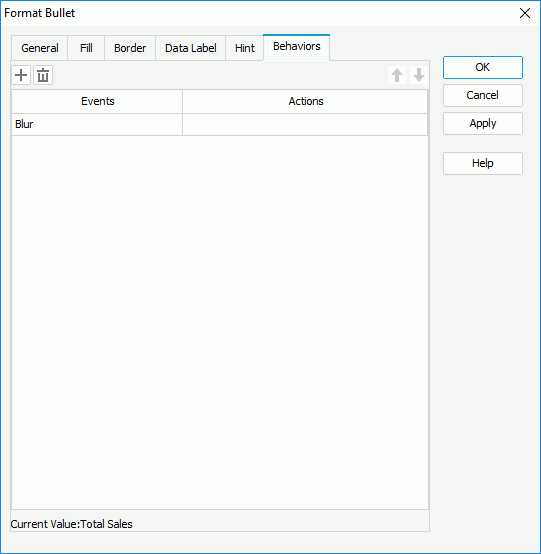
To define the web behavior, select a trigger event from the drop-down list in the Events column, then select in the Actions column and select the ellipsis
 . In the Web Action List dialog box, bind a web action the same as you do to web controls in the library component. The web actions you can bind include Filter, Sort, Parameter, Property, and SendMessage.
. In the Web Action List dialog box, bind a web action the same as you do to web controls in the library component. The web actions you can bind include Filter, Sort, Parameter, Property, and SendMessage.You can select Add
 to add and define more web behaviors; to delete a web behavior, select it and select Remove
to add and define more web behaviors; to delete a web behavior, select it and select Remove  . You can also select a web behavior and select Move Up
. You can also select a web behavior and select Move Up  or Move Down
or Move Down  to adjust the order of the behaviors, then at runtime, when an event that is bound with more than one action happens, JDashboard triggers the upper action first.
to adjust the order of the behaviors, then at runtime, when an event that is bound with more than one action happens, JDashboard triggers the upper action first. - Select OK to accept the changes and close the dialog box.
 Previous Topic
Previous Topic
 Back to top
Back to top